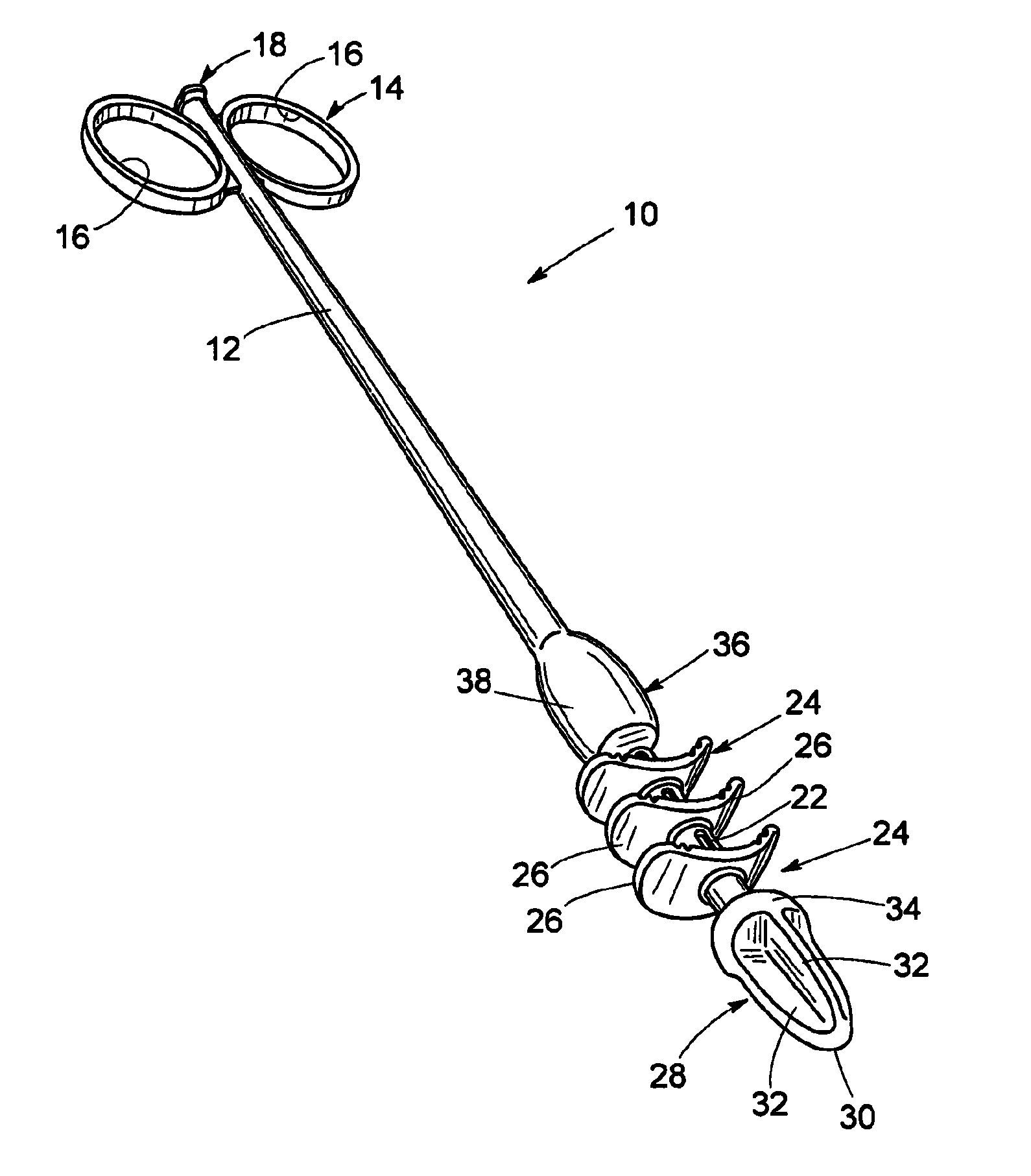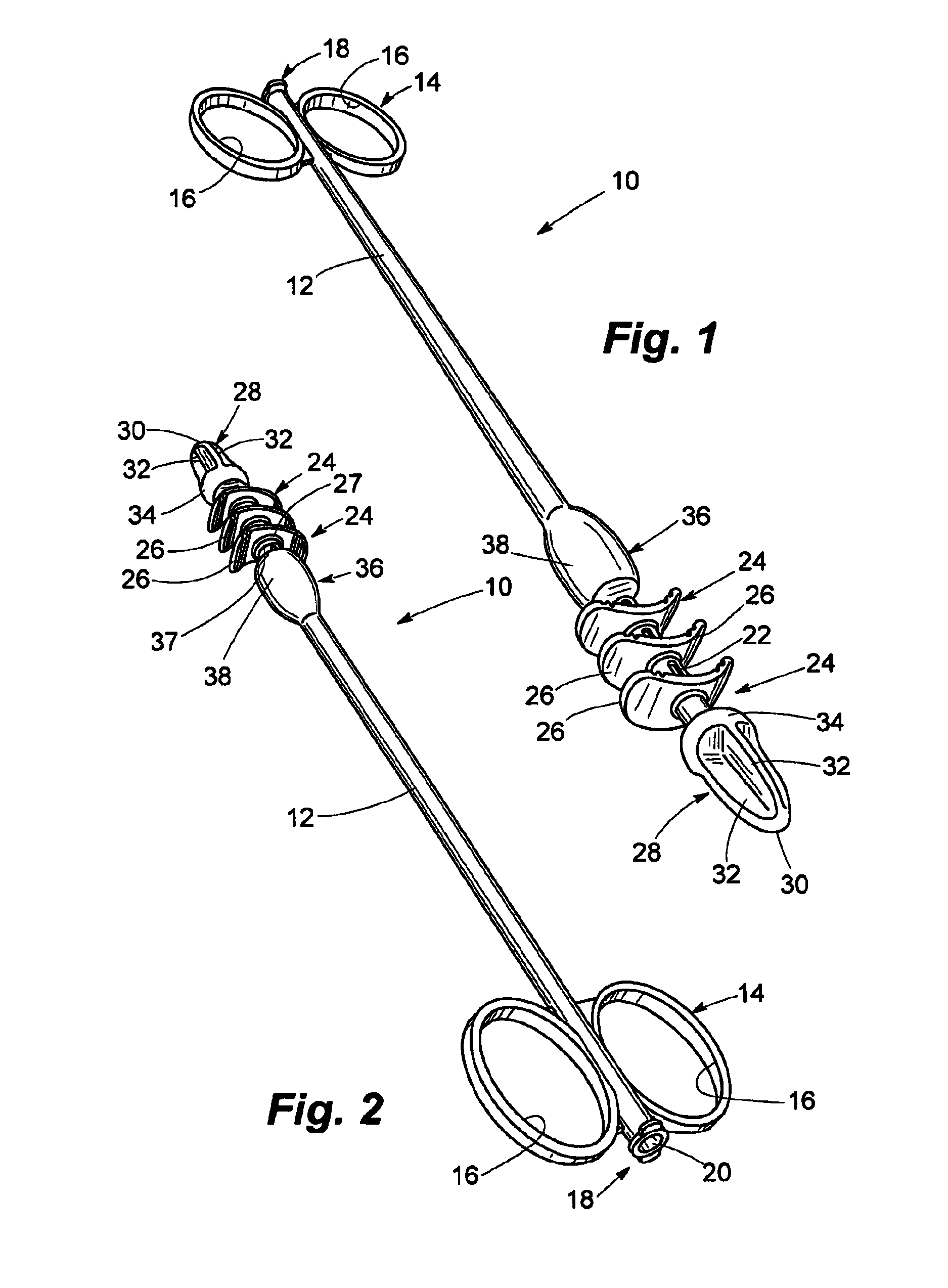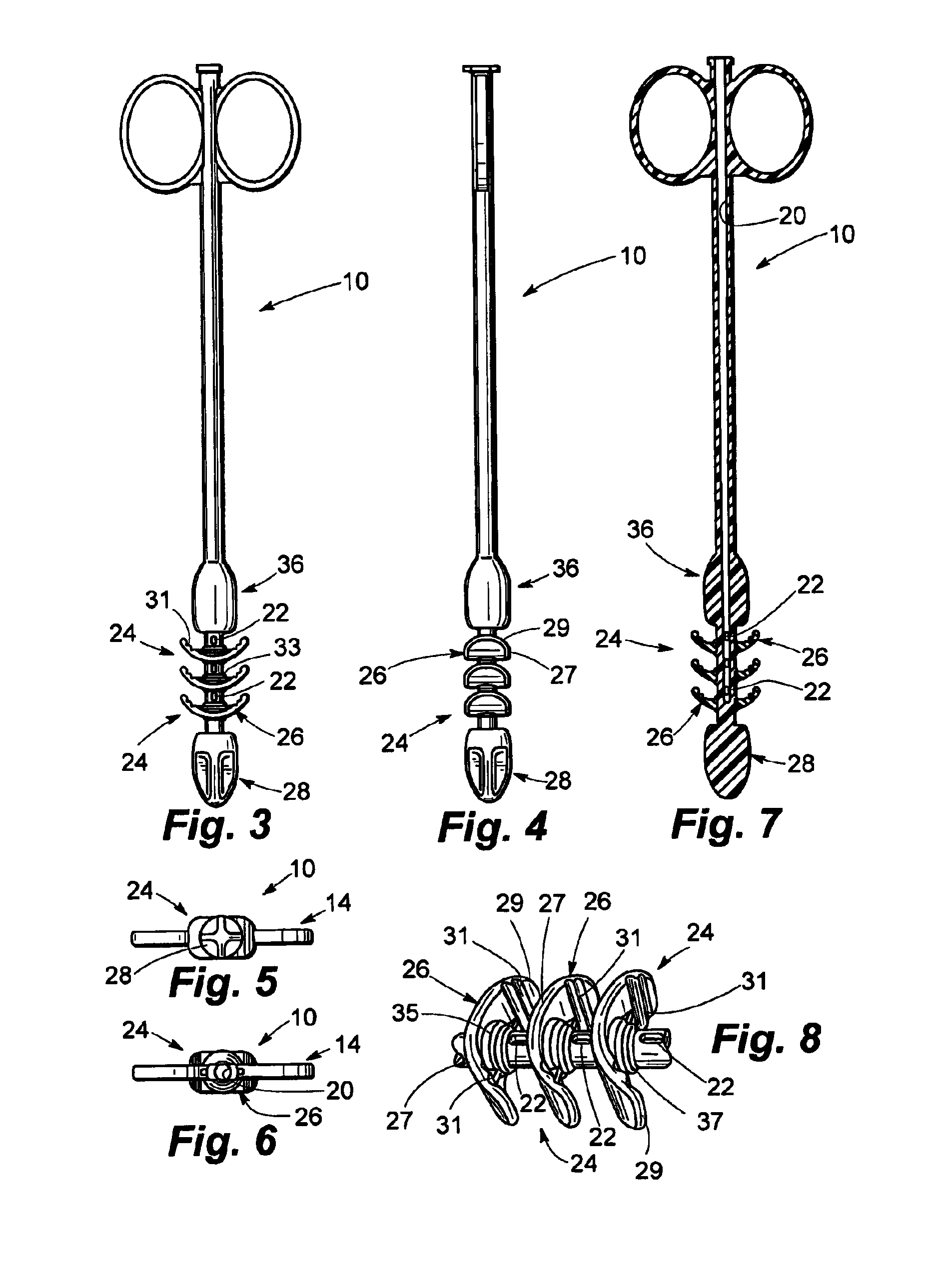Fecal impaction removal tool
a technology for removing tools and fecal bolus, which is applied in the field of tools for removing fecal bolus, can solve the problems of inability to easily pass through the anus of growing fecal bolus, and inability to spontaneously empty the rectum of accumulated stool, etc., to achieve convenient and effective loosening and fragmentation of fecal mass, and improve the effect of s
- Summary
- Abstract
- Description
- Claims
- Application Information
AI Technical Summary
Benefits of technology
Problems solved by technology
Method used
Image
Examples
first embodiment
[0039]Referring now to the drawings and particularly to FIGS. 1 through 8, a fecal impaction removal tool configured according to the invention is seen at 10 to comprise an elongated shaft 12 preferably formed of a resinous or “plastic” material of a durometer imparting a desired rigidity such that a medical practitioner can insert distal portions of the tool 10 through the anus of a patient and into the rectal vault to engage an impacted fecal mass lodged therein. The flexible shaft 12 is sufficiently rigid to allow partial insertion of the tool 10 into the rectum as well as manipulation of the tool 10 while engaged with an impaction followed by withdrawal to remove at least fragments of an impaction created by manipulation of the tool 10.
[0040]The shaft 12 is terminated proximally by a handle 14 formed of loops 16 each capable of receiving one of a practitioner's fingers for ease of use of the tool 10 such as by application of torque to the tool 10 and especially for withdrawal of...
second embodiment
[0050]Referring now to FIGS. 9 through 12, the invention designated as tool 40 is seen to be essentially identical in all respects to the embodiment of FIGS. 1 through 8 with the exception of the relative orientation of sets 42 of grappling elements 48. The tool 40 is seen to be provided with distal and proximal dilators 44 and 46 respectively in a manner identical to the structure of the tool 10. However, the sets 42 and the grappling elements 48 are seen to be rotated angularly relative to each other by approximately 45° which, for a tool having four sets 42 of the grappling elements 48 as does the tool 40, produces a “swirling” arrangement of the sets 42. The functions of the tool 40 are essentially identical to the functions of the tool 10 shown in FIGS. 1 through 8 supra.
[0051]As is seen in FIGS. 13 through 16, a tool 60 is seen to be substantially identical to the tools 10 and 40 described herein with the common exception of the orientation of sets 52 of grappling elements 68....
PUM
 Login to View More
Login to View More Abstract
Description
Claims
Application Information
 Login to View More
Login to View More - R&D
- Intellectual Property
- Life Sciences
- Materials
- Tech Scout
- Unparalleled Data Quality
- Higher Quality Content
- 60% Fewer Hallucinations
Browse by: Latest US Patents, China's latest patents, Technical Efficacy Thesaurus, Application Domain, Technology Topic, Popular Technical Reports.
© 2025 PatSnap. All rights reserved.Legal|Privacy policy|Modern Slavery Act Transparency Statement|Sitemap|About US| Contact US: help@patsnap.com



